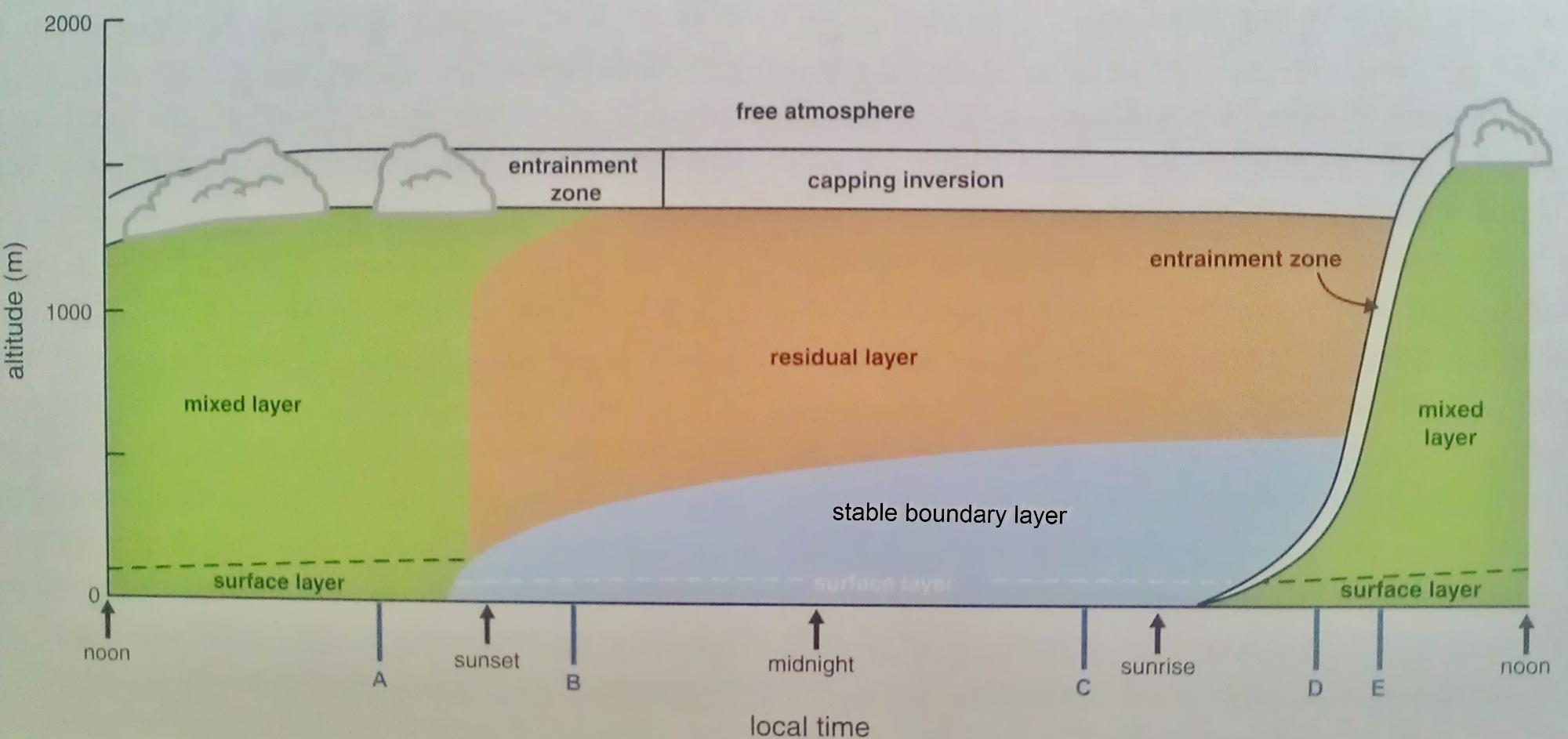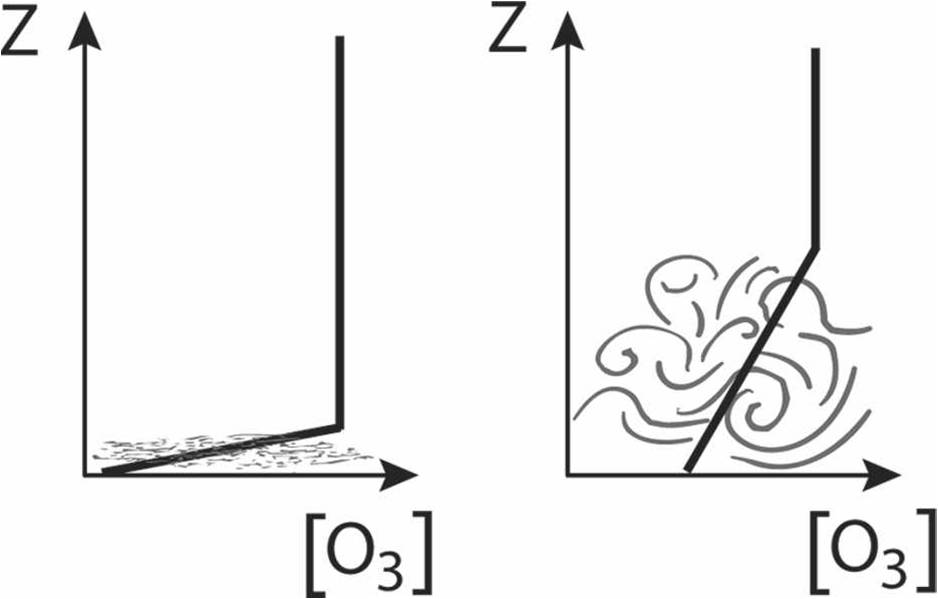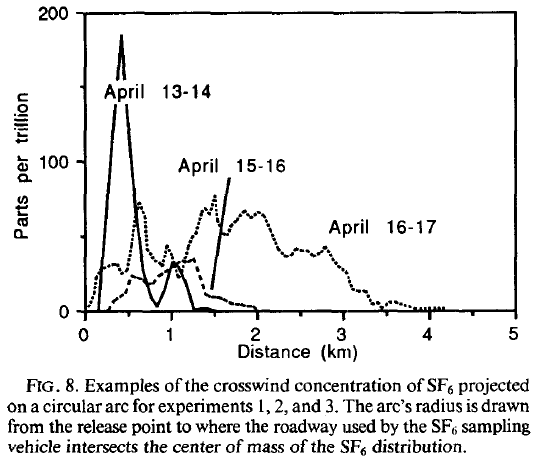Shallow SBL and Concentration of Pollutants
Above the SBL, a residual layer (RL; look at the figure below) forms from the remnants of the daytime convective mixed layer [2]. The nocturnal profile is constructed of these two layers. Radiational temperature inversion at night is strong enough to suppress mixing, producing a very shallow, even 10 or fewer meters deep layer adjacent to the surface [3].

As seen in the plot below, the depth of the SBL governs the atmospheric transport and dispersion of pollutants. Concentrations disperse little at night due to lack of buoyancy.

Height of the atmosphere is on the vertical axis and potential temperature is on the horizontal axis. The top of the stable layer is roughly around the height where the potential temperature profile starts being vertical. We can see that in the case on the right, the stable boundary layer is much deeper than in the case on the left. Figure from source [3].
On clear days, a new thermally stable surface layer forms in the evening near the sunset hours. However, this formation does not affect the concentrations of pollutants evolved over the course of the day within the Residual Layer.
According to the observed structure of the NPBL during a project called STABLE, the height of the boundary layer varied per day according to measurements. The height was shallow on night 1 and was estimated between 36 and 61 meters.
Night 2, had an estimated height of about 150 meters. Less concentrated plumes were seen for night 2 and a more concentrated plume for night 1 during the shallow boundary layer depth. [10]

In a study by Haupt, the depth of the SBL was very important in predicting downwind concentrations of pollutants. The results indicated that the concentration is approximately inversely proportional to the depth of the BL [7].

Home ------ Back to Top ------ Next>>